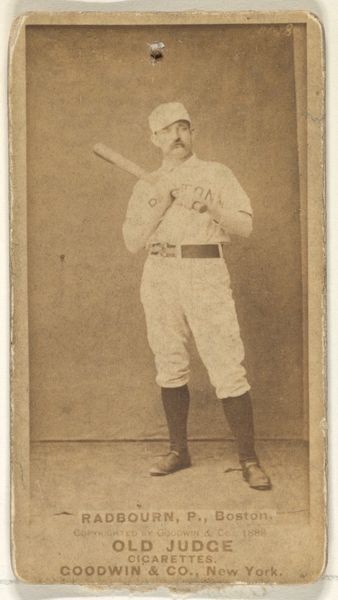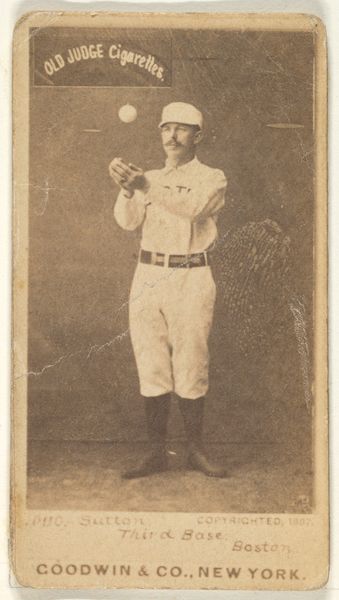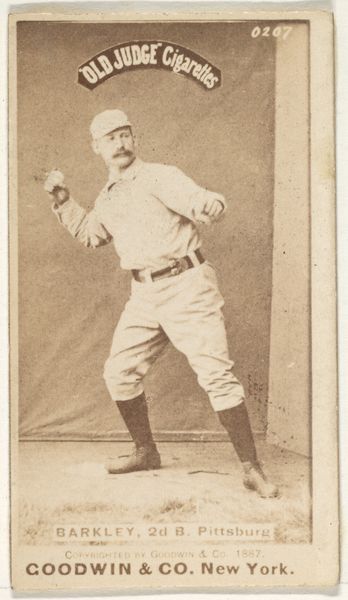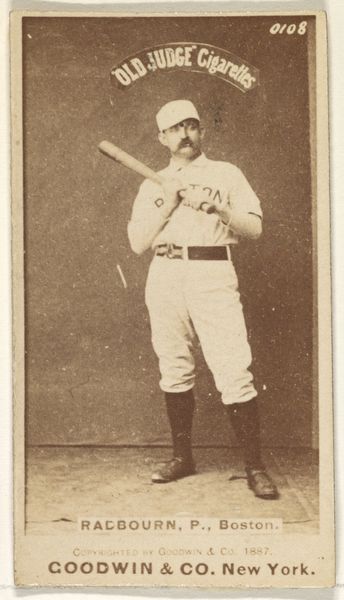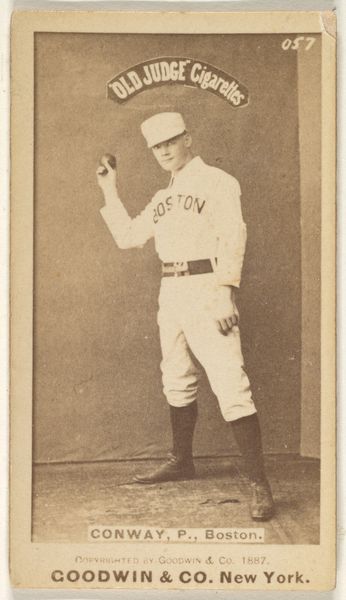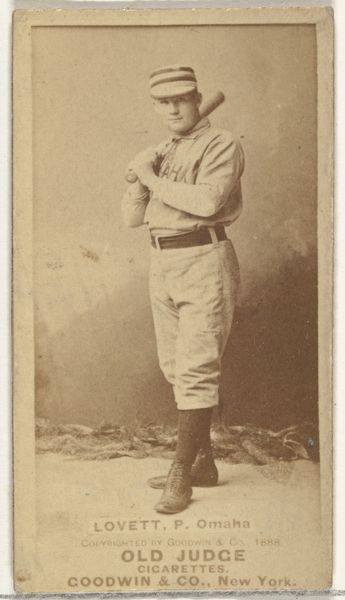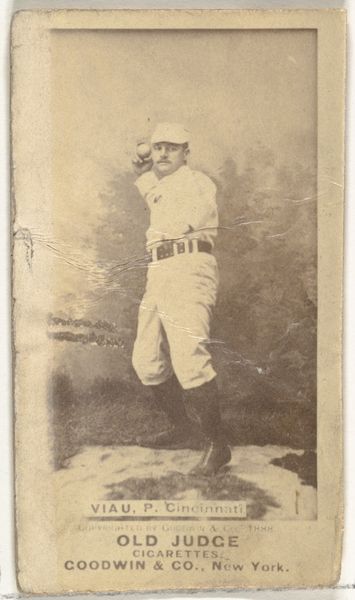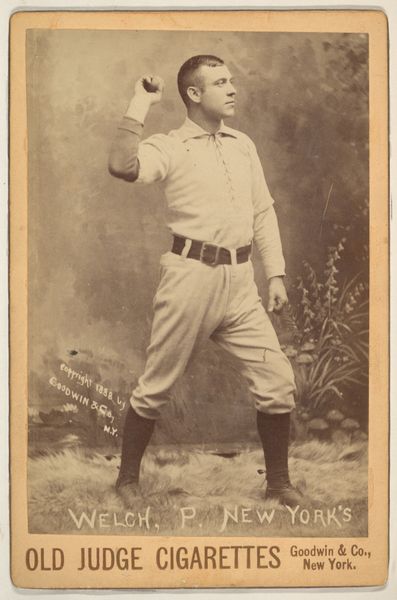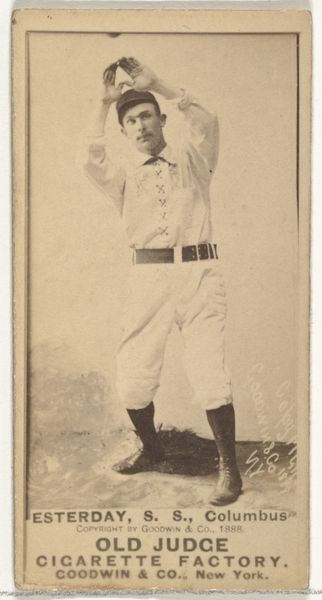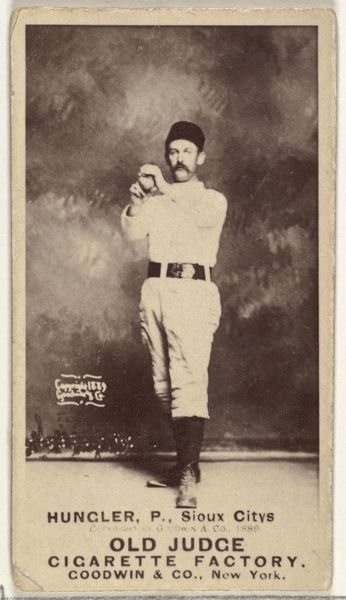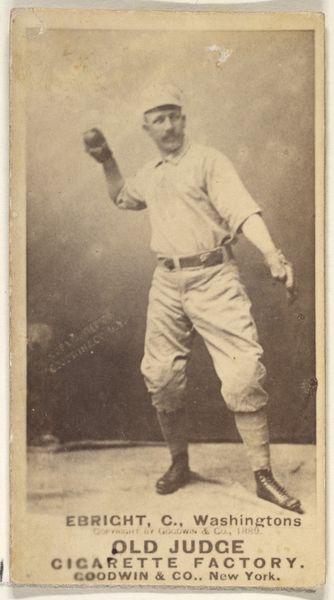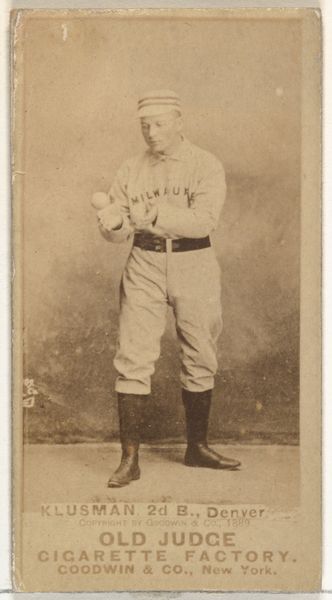
Johnston, Center Field, Boston, from the Old Judge series (N172) for Old Judge Cigarettes 1888
0:00
0:00
drawing, print, photography, albumen-print
#
portrait
#
drawing
# print
#
baseball
#
photography
#
men
#
albumen-print
Dimensions: sheet: 2 11/16 x 1 3/8 in. (6.9 x 3.5 cm)
Copyright: Public Domain
Curator: Before us is an albumen print from 1888, titled "Johnston, Center Field, Boston, from the Old Judge series" by Goodwin & Company. It depicts a baseball player in full uniform. Editor: The sepia tone lends a nostalgic air. I'm immediately drawn to the figure’s pose – casual yet poised, the small dark ball in his hand a focal point against the lighter background. Curator: Exactly. It's one in a series of baseball cards printed by Goodwin & Company to be included in packs of Old Judge Cigarettes. These cards served not only as collectibles but as advertisements for the tobacco company, inserting images of sport into the landscape of American consumer culture. Editor: So, considering its dimensions as a cigarette card, the visual organization is quite striking. The tight framing focuses our attention on the figure, while the subtle variations in tone and texture across the background and uniform are finely rendered. Notice how the textures—the fabric of his uniform, the leather of the baseball—are all distinct, delineated only through light. Curator: These baseball cards weren't simply printed; albumen prints were created using a process that involved coating paper with egg white, which made for a smooth surface upon which a photographic image could be printed. The production process, the printing and distribution methods, and the commercial imperative – these aspects significantly inform our understanding of the image itself. Editor: I see that, yet I find that attention to process almost distracts from the core compositional elements: the way the body occupies the space, the gentle curve of the arm holding the ball mirroring the subtle bend in the player's stance... These visual rhymes create a harmonious, almost classical effect. Curator: And the photograph, functioning as advertisement, taps into contemporary trends of commercial image consumption in America. Images that were never designed for high art consumption but nevertheless illuminate society, culture, labor... Editor: All crucial layers, and a vital example of how formal properties—the interplay of line, form, and light—can create meaning. Ultimately, both are fused. Curator: Agreed. This work presents an excellent example of the commercial influences on art at the time. Editor: Indeed. A poignant capsule of form and time, perfectly captured.
Comments
No comments
Be the first to comment and join the conversation on the ultimate creative platform.
